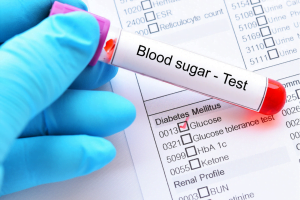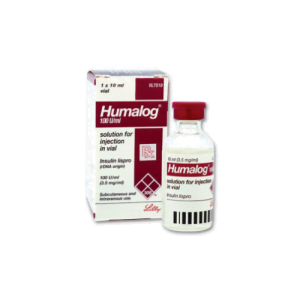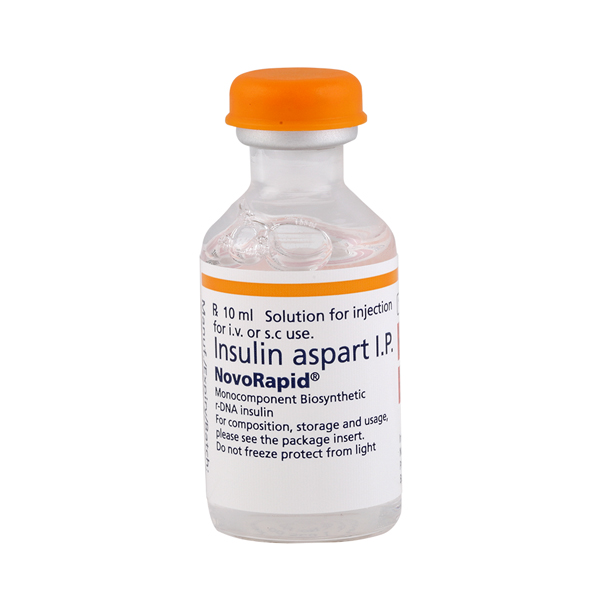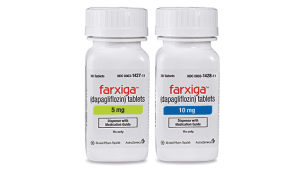What is Type 2 Diabetes?
Type 2 diabetes (T2D) is a chronic condition where the pancreas does not produce enough insulin or the body does not respond properly to it. Insulin is a natural hormone that is produced by the beta cells in the pancreas, which helps to regulate blood glucose levels. When we eat, glucose is absorbed into the bloodstream. Glucose is a form of sugar which is one of the main sources of energy for your body and its cells. Insulin helps to transport glucose from the bloodstream to the body’s cells, where it is stored or used for energy. Without insulin, glucose cannot be absorbed or used as energy, which leads to a build up of glucose in the blood. T2D is a medical condition which is characterized by high blood sugar levels. People with T2D are required to adopt a healthy lifestyle which includes a healthy diet plan and exercise program to help them control their blood sugar levels. If these two forms of treatment do not work, an oral diabetes medication may be required to be prescribed.
Type 2 diabetes usually occurs in adults, although kids can also develop this chronic condition. For many years, doctors have associated only type 1 diabetes with children. In fact, this medical condition was initially called juvenile diabetes. It was rare to find children diagnosed with T2D, which was associated with adults. However, that has changed. Type 2 diabetes in kids is rising, which could be attributed to poor lifestyle choices which causes obesity. Obesity is one of the biggest risk factors that results in T2D in children. In T2D in kids, their bodies cannot properly respond to insulin, a condition known as insulin resistance. This leads to high blood sugar levels. If left untreated, high blood sugar levels in children can result in serious health complications such as kidney failure, heart disease or blindness. To avoid these complications, it is important you manage T2D in kids. There are different ways of managing T2D in kids. You can encourage your child to exercise regularly, eat a healthy diet, and maintain a healthy weight. If exercise and diet is not successful in controlling your child’s blood sugar levels, an oral medication may need to be prescribed.
Signs and Symptoms
Studies show that about 40 percent of children with T2D have no signs and symptoms. Many kids with T2D are diagnosed with this condition during screening for other health risks that are associated with obesity. Although initially you may not notice any signs and symptoms, over time your child may develop the following symptoms of type 2 diabetes:
- Blurred vision. Too much blood sugar in kids with T2D can pull fluids from your child’s lenses. This can cause them to have blurry vision.
- Increased hunger. Kids with T2D tend to feel more hungry than usual because they lack insulin to convert food into energy. As a result, their body sends signals that they need to eat food so that they can provide their body with energy.
- Slow healing. Infections or sores healing slowly may be a symptom of T2D.
- Fatigue. Glucose is one of the biggest sources of fuel. Without insulin, kids with T2D cannot absorb glucose from the bloodstream. Hence, they tend to feel more lethargic and tired.
- Unexplained weight loss. When you don’t get energy from glucose, the fat stores and muscle tissues will start to shrink. This may result in weight loss in children with T2D.
- Frequent urination. Too much glucose in the bloodstream can pull fluids from the body tissue. This might make your diabetic child thirsty, hence drink more fluids. As a result, they will need to pee more.
In case you notice any of these signs and symptoms in your child, you should take them to see a doctor immediately. If not treated, T2D in kids could lead to serious health complications. Screening for T2D is recommended for adolescents and kids with obesity and other risk factors such as family history with diabetes or physical inactivity. Type 2 diabetes in children requires to be tested by a pediatrician so that it can be properly identified. In case the doctor suspects that your child has T2D, they may need to perform different tests such as blood glucose tests, A1C test, or glucose tolerance test.
Causes
It is not yet known what really causes T2D in children. However, studies reveal that family history and genetic factors could play a role. Obesity is another factor that can cause T2D in children. Kids who are overweight or obese have a higher risk of becoming resistant to insulin. As a result of insulin resistance, kids with T2D tend to have high blood sugar levels. If your child is not physically active, they are at risk of developing T2D. This is because physical activity helps your child maintain a healthy weight, utilize glucose for energy and make their cells responsive to the effect of insulin. Also, adolescent girls are more likely to develop T2D than adolescent boys. Kids from different ethnic backgrounds may also have different risks of developing type 2 diabetes.
Treatment
If your child is diagnosed with type 2 diabetes, they may require a lifelong treatment which involves regular exercise, healthy eating and in some instances, insulin or oral diabetes medications. You will need to keep monitoring your child’s blood glucose levels as part of their treatment. You will need to work with your child’s diabetes treatment team, which can include a dietitian, a doctor and a certified diabetes educator to help bring your child’s blood sugar to normal levels.
Physical activity
Encourage your child to exercise regularly so that they can maintain a healthy weight. Engaging in physical activity such as aerobic exercise can help reduce high blood sugar levels.
Healthy diet
Your child will need to adopt a healthy diet that includes whole grains, fruits and vegetables. Your child may be able to take sugary foods, but make sure it is included in their meal plan, and always ask your doctor first. Your child’s dietitian may recommend you reduce the portion size and take less calories.
Medications
Metformin is the first medication that your child may be prescribed to use if they have type 2 diabetes. Metformin works by reducing the amount of glucose released by the liver between meals. This helps to control their blood glucose levels. In addition to controlling their blood glucose levels, metformin may help your child lose weight.
Disclaimer: Please note that the contents of this community article are strictly for informational purposes and should not be considered as medical advice. This article, and other community articles, are not written or reviewed for medical validity by Canadian Insulin or its staff. All views and opinions expressed by the contributing authors are not endorsed by Canadian Insulin. Always consult a medical professional for medical advice, diagnosis, and treatment.














